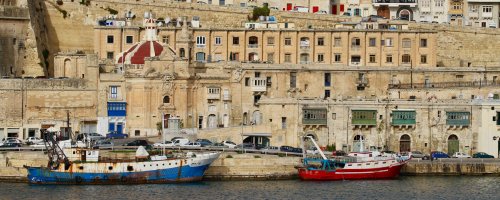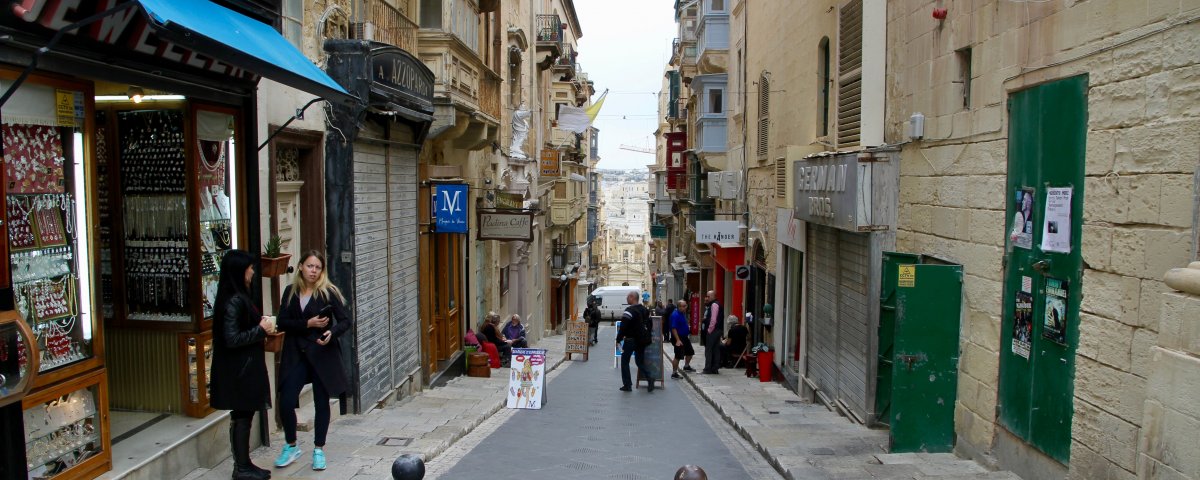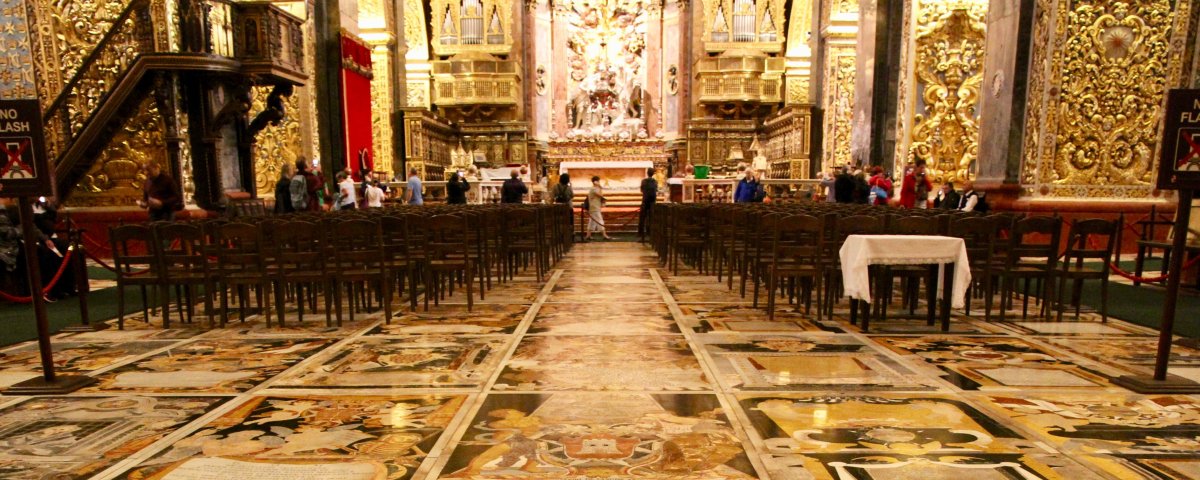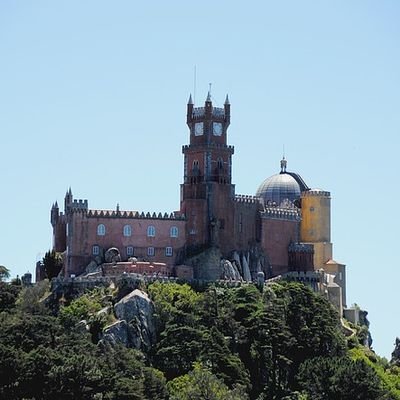It was in the 1500s that the Knights of St John and military engineers were sent by Pope Pius V to create a 'city built by gentlemen for gentlemen.' It was intended to be the cultural and holistic heart—a fortress to defend Christendom. Overlooking the Grand Harbor, Valletta was born. This fascinating postage-stamp-sized city is one of the smallest capital cities in the world with 28 churches, the most beautiful of all being John's Cathedral, where you can gawk at two works by Caravaggio, the celebrated Italian artist.
A fortified medieval city oozing historical significance with the Mediterranean Sea washing the feet of its mammoth stone walls, Valletta is awash in both Renaissance and Baroque architecture that makes history buffs swoon. A UNESCO World Heritage site, the town, and its 320 monuments sit on a rocky peninsula of only 55 hectares. During the Crusader's reign, it was the bastion of elite Maltese society and Europe's treasures. Eventually, the Knights' rule imploded into chaos and corruption, and Napoleon invaded in 1798 on his way to Egypt. The British removed this French party gatecrasher in 1813, and Valletta became a garrison town until becoming independent in 1964.
Valletta is not peaceful. The local dialect, Maltese, is totally dissimilar to anything you may have heard before—think Arabic dialect wrapped up with French, Italian, and English, and spoken in a hand-flapping flurry by locals hanging out on corners. Church bells constantly ring during the night and day, while the honking horns of delivery trucks attempting to navigate the narrow streets choked with cars compete with the loud hailers of food vans announcing their arrival for business. Salty fog permeates the air in the winter, while summer brings a Mediterranean warmth that will have you seeking the shade of ancient trees.
The city of stairways, Valletta, is a jigsaw puzzle of antiquity and contemporary European style. Immerse yourself in its tangible fabric of life and monuments by day. By night, find yourself sipping an exquisite wine in a classy 400-year-old underground cellar—Trabuxu Wine Bar—while mingling with sophisticated bohemian patrons. Don't forget to gratify your stomach rumbles with mouthfuls of delectable local goats cheese, artfully sprinkled with aromatic black pepper.
Like layers of a piano accordion, well-worn steps weave up hilly roadways to blossom into cobblestone-layered piazzas splattered with outdoor cafes. The infamous steps from the Grand Harbor to the upper part of Valletta, nicknamed 'Nix-Mangiaris,' were the haunt of desperate beggars during British rule. The ancient stone stairways follow the limestone-laden streets set out in a grid pattern. Brightly painted doors and window boxes jump out from tall, lean buildings squashed together in neat ascending rows. Shrines and statues proudly dominate street intersections where locals gather in gossiping groups.
Despite the staircases, the city is made for walking while poking your nose into nooks and crannies. It’s home to one of the oldest museums in the world, the National Museum of Archeology. And St John's Cathedral is simply breathtaking. The jaw-dropping flush of gold everywhere is a slap in the face. Its skeleton-smothered floor conceals the tombstones of the knights who fell during the Great Siege of Malta. An Aladdin's cave littered with marble, gold and priceless artistic masterpieces, not just the Caravaggios. The moment you enter St John's Cathedral, the weight of its long history and the intense religious air descends in a surreal cloud of mysticism.
When hiking up and down stairways has given you an appetite, pig out on the iconic food of Valletta–pastizzi. Not for those with clogged arteries, this Maltese snack is a pastry filled with ricotta and mushy peas, sold by street vendors 24/7. Wash it down with a rich espresso for breakfast, and you will be good to go stair-climbing until lunch. Much of the food is imported into Malta, which is heavily influenced by Italian, North African, Middle Eastern, and Sicilian fare. The dish of 'fenkata’, stewed rabbit with herbs in wine, is the next iconic dish of Valletta and can be found in most cafes and restaurants around town. Or, wrap some pasta around your fork in Strait Street, where you will find the best Italian-Maltese cuisine on the island.
Valletta, once a supposed gentleman’s domain, is now a backdrop for many movies because of its incredible architecture and ancient structures. Fort Ricasoli at the mouth of the Grand Harbor was the location for numerous films—Troy, Gladiator, and Assassin's Creed, to name a few. It was also the setting for the Red Keep Prison in the dramatic fantasy 'Game of Thrones' HBO series, a cultural phenomenon of Machiavellian characters and bloody massacres. Look closely throughout the picture as numerous of the cobblestone backstreets of Valletta are used in quite a few King's Landing scenes.
Valletta is an open-air museum with fantastic food.
Gail Palethorpe, a self proclaimed Australian gypsy, is a freelance writer, photographer and eternal traveller. Check out her website Gail Palethorpe Photography and her Shutterstock profile.

















